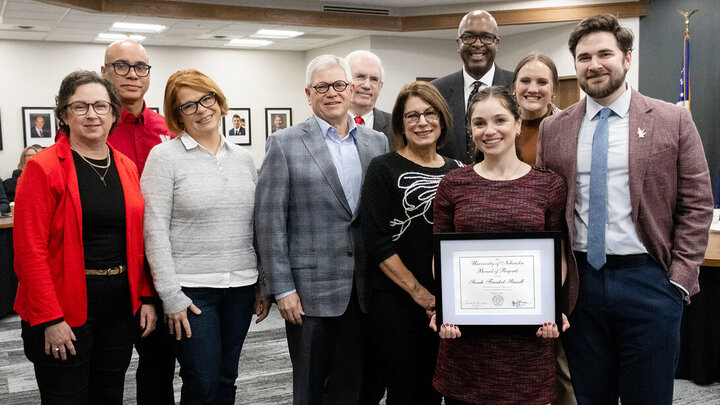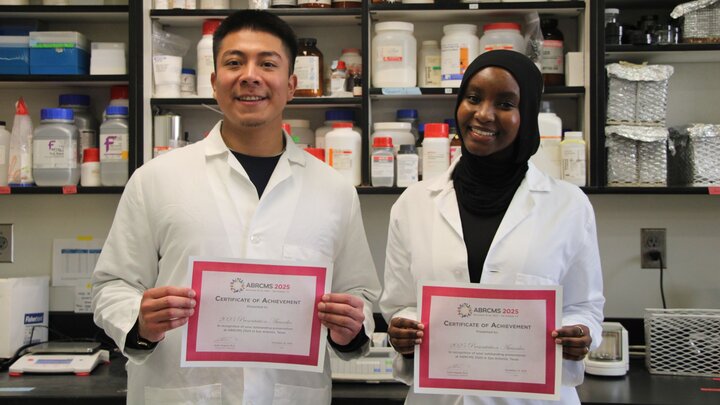UNL physicist Greg Snow joined hundreds of researchers at the CERN laboratory in Geneva, Switzerland, to discuss how the particle accelerator will progress over the next decade.
The weeklong gathering marked the end of a four-year design phase for the High Luminosity Large Hadron Collider. By 2025, this series of improvements should allow the particle accelerator to produce roughly 10 times more particle collisions – and resulting data – than it does now.
Ramping up the particle smashing will offer more opportunities to detect rare phenomena while helping to refine measurements of the Higgs boson and other previous observations, Snow said.
“Our research group at UNL is very excited to be part of new discoveries foreseen to emerge using the new accelerator,” said Snow, professor of physics and astronomy.
*
Identifying and measuring those discoveries will require upgrades to the Compact Muon Solenoid, or CMS, one of two massive particle detectors that helped confirm the existence of the Higgs boson in 2012
UNL is leading an $11.5 million effort to improve the pixel resolution and data-streaming capabilities of CMS components that track the trajectories of high-energy particles produced when protons collide. Without these improvements, the CMS would be overwhelmed by the sheer number of proton collisions to come.
Headed up by Aaron Dominguez, professor of physics and astronomy, the CMS detector upgrade should be completed by 2019. He also agreed to help coordinate U.S. plans for a successor to the CMS module being assembled at UNL.
“Starting around 2025, we will upgrade the accelerator complex again and have a shutdown where we remove the current detector – which we’re busy building downstairs in Jorgensen Hall – and install another one,” Dominguez said. “Because of the time lag involved in research and development, we have to start thinking about that now, even while we’re building the detector that we will eventually tear out.”
*
UNL’s Ken Bloom, who serves as manager of software and computing for the U.S. CMS operations program, said better understanding the Higgs boson will represent a major goal for physicists working at the HiLumi Large Hadron Collider.
In the predominant Standard Model of particle physics, the Higgs boson explains how elementary particles – the building blocks of all matter – gain their mass.
“We certainly believe that the Higgs has been discovered, but the properties have not been nailed down to any great precision,” said Bloom, associate professor of physics and astronomy. “Everything that we’ve seen is consistent with what we’d expect from a Higgs boson in the Standard Model, but all these measurements are sort of at the 20 or 30 percent level.”
*
“When you add up all of our best world knowledge that we’ve accumulated over the past 50 years or so, it still describes only about 5 percent of the matter and energy content of the universe,” Dominguez said. “If you were my student in a physics class, and you took an exam where you got 5 percent out of 100, you’d probably get an ‘F.’
“So that’s one of our big, outstanding questions: Can we produce and directly (detect) some dark matter particles in our collisions at the accelerator? That’s an exciting thing.”
Dominguez said physicists will also use the upgraded accelerator to try reconciling gravity with the Standard Model, which has yet to reliably account for the force at the quantum level of sub-atomic particles.
“We’re basically trying to do everything,” Dominguez said with a laugh. “We’re trying to take as full advantage of this opportunity as possible.”
Adapted from this UNL Today story.
Physics is a science area of the College of Arts and Sciences at the University of Nebraska-Lincoln. Connect with them on Twitter and Facebook.



